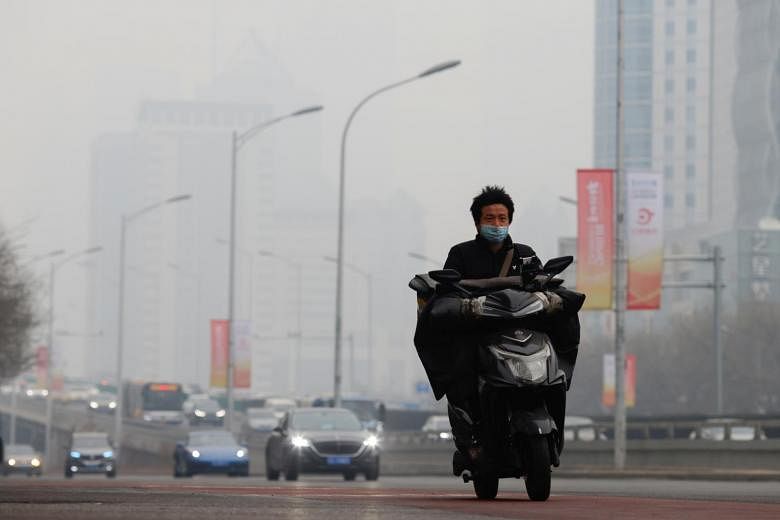BEIJING (REUTERS) - China's air quality targets for this year will be set at a slightly higher level than last year's average, an official said on Thursday (Feb 25), after pollution fell significantly in the early part of 2020 due to coronavirus-related lockdowns.
China will seek to keep average levels of small, hazardous airborne particles known as PM2.5 at 34.5 micrograms per cubic metre over the course of 2021, the environment ministry said on Thursday.
That is slightly higher than the average of 33 micrograms registered in 337 monitored cities over the whole of 2020, with capital Beijing averaging 38 micrograms last year.
"This year's target (for achieving good air quality) looks like it is a little lower than the 2020 figure, but if you eliminate the impact of the pandemic on air quality, the PM2.5 rate would have been 35 micrograms (last year)," said Mr Liu Bingjiang, head of the air pollution unit at the Ministry of Ecology and Environment (MEE), speaking at a regular briefing.
China's national "interim" air quality standard is currently 35 micrograms per cubic metre, well above the World Health Organisation's recommendation for average annual levels of no more than 10 micrograms.
Though smog-prone regions in China's heavy industrial north have made significant improvements in air quality in recent years, concentrations of PM2.5 often jump to dangerous levels.
Readings in Beijing over the Chinese new year holiday exceeded 200 micrograms.
Mr Liu said more work needed to be done in the coming five years to replace coal with cleaner forms of energy.
"If China doesn't curb coal consumption growth, it will put big pressure on climate and pollution targets," he said.
Mr Liu noted that during the 2016-2020 period, China's natural gas consumption grew by 150 billion cubic metres (bcm) and could grow another 120 bcm over 2021-2025.
But he added this would would be "meaningless for the climate target" if it isn't used to replace coal.

